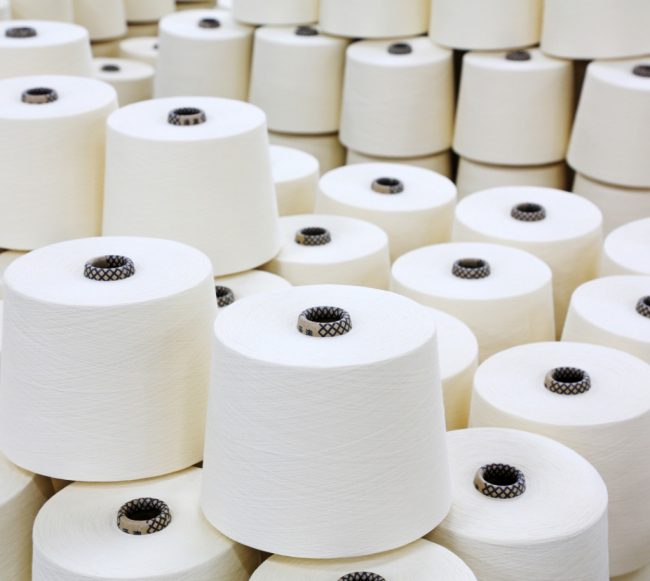
Invest in innovation and sustainability to be the leader
India has the potential to increase its capacity and the growth is visible, it’s time for the manufacturing of quality yarns of garments for India and the world, says Sammir Dattani.
India is globally known to set examples and break benchmarks as we proceed and lead from the front. This year India has celebrated 75 years of sheer growth in industrial and capital progress as we have memorised our 75 years of independence by weaving fibre into fashion. India has a long way ahead with leaders leading and industries creating opportunities for growth and change to be impacted. Textile sector is one of the oldest industries in the Indian economy, dating back several centuries. With young growing population, the international brands are setting up hubs in India to source locally so India can increase its potential by expanding its ecosystem.
The global image of the textile industry is a bit different compared to India in the last 6 months because of the Russia and Ukraine conflict. While the war has created trade barriers for the world at large, increase in raw material and energy prices has impacted the overall global consumption and the buying pattern has come down. But, the opportunities that favour Indian players in the textile industry have created support for the positive boost in India. With a growing domestic market and China Plus One model is giving India new opportunities everyday at global level.

Global market
The global textile market size – valued at $ 993. 6 billion in 2021 – is anticipated to grow at a compound annual growth rate (CAGR) of 4% from 2022 to 2030. The increasing market size and its valuation signify the scope of growth that India can tap into. India is a country with the majority of the population being young and employed which makes it have enough buyers internally. Further, considering the increase in demand for fabric and textiles and the increase in per capita income, the spending limits of the population too has increased. Such spending limits have not only increased the demand for textiles internally but also the youth believe in a fashion that is sustainable, so the textile has to be made from sustainable practices.
The global industry has understood that too much supply from one country can impact the economy if there is no other sourcing country and hence China Plus One model has really helped India scale its production. We have gained from the fruit of this model plant and its long-term influence, which will have a larger impact as we progress further. The demand for the Indian textile industry will continue to increase by 10-12% CAGR.
The global synthetic fibres market is expected to grow from $ 62.93 billion in 2021 to $ 98.21 billion growing at a CAGR of 5.1% over the forecast period. Increasing consumer demand for cost-effective, durable, and easy-to-wash & maintainable fabrics is expected to drive the market growth over the forecast period. These fibres are preferred in various application industries such as clothing, home furnishing, filtration, and automotive, on account of their unique properties including excellent chemical, mechanical, and physical properties such as strength, softness, elasticity, crease recovery, and high lustre. Sanathan Textiles has introduced performance yarn products like Sanathan Drycool which are used for athleisure and Sanathan Stretch to cater to the requirement of Young India.
Asia Pacific dominated the market in 2021 and is expected to witness the fastest growth over the coming years due to factors such as increasing urban population, rising awareness regarding fitness awareness, growing demand for clothing, and escalating increasing disposable incomes are expected to drive the growth of the apparel & textile industry in the region. In addition, shifting fashion trends coupled with the rising urban population with modern living standards are expected to provide opportunities.
Innovate and invest in technology
The market has been witnessing an increasing adoption of advanced technology and methods. The market players are trying to increase their sales through investment, partnerships, and agreements with brand owners, e-commerce facilitators, and retailers to facilitate overall market growth. Industry players focus on technological advancements in the manufacturing process, in order to minimise the environmental impact. In addition, the players are investing heavily in R&D to overcome environmental concerns.
The game does not belong to the survivor, but to the winner who innovates and uses technology to expand. Hence, the Indian textile industry needs to invest heavily in technology and innovation and that will create an impact. The increase in technology and innovation will increase production capacity and reduce cost, which will support the future of the textile industry. The Government of India is framing policies that will create a future impact by investing in the right drivers. The Government of India has earmarked a corpus of Rs 1,000 crores ($ 127.72 million) dedicated to research and development of the technical textiles sector. Under the Union Budget 2022-23, the total allocation for the textile sector was Rs 12,382 crores ($ 1.62 billion). Out of this, Rs133.83 crore ($ 17.5 million) is for the Textile Cluster Development Scheme, Rs 100 crores ($ 13.07 million) for the National Technical Textiles Mission, and Rs 15 crores ($ 1.96 million) each for PM Mega Integrated Textile Region and Apparel parks scheme and the PLI Scheme.
The government allocated funds worth Rs 17,822 crores ($ 2.38 billion) between FY16-22 for the Amended Technology Up-gradation Fund Scheme (A-TUFS), to boost the Indian textile industry and enable ease of doing business. The policies and initiatives taken by the Government of India depict the faith it is investing in the industry to explore and expand. India has the potential to increase its capacity and the growth is visible, it’s time for the manufacturing of quality yarns of garments for India and the world.

Ways to sustain growth
Indian textile players have a huge scope for expansion and the production capacity will increase when innovation is bonded with technology, to optimise, the economies of scale. The increase in production creates employment opportunities, which further increases the capacity of the population to spend. A lot of international brands are coming to India and local manufacturers working with international brands create a huge impact on the economy. At Sanathan Textiles, the leadership team is of the firm opinion that sustainable investment is necessary, because production should increase but not at the cost of destroying our planet, and hence, we have also invested in renewable energy, thereby reducing the carbon footprint on the planet.
The domestic apparel & textile industry in India contributes 2% to the country’s GDP, 7% of industry output in value terms, and the share of textile, apparel, and handicrafts in India’s total exports was 11.4% in 2020-21. India holds a 4% share of the global trade in textiles and apparel. India is the 6th largest exporter of textiles and apparel in the world. India is one of the largest producers of cotton and jute in the world. India is also the 2nd largest producer of silk in the world and 95% of the world’s hand-woven fabric comes from India. The Indian technical textiles segment is estimated at $16 billion, approximately 6% of the global market. The textiles and apparel industry in India is the 2nd largest employer in the country providing direct employment to 45 million people and 100 million people in allied industries.
The re-weaving of India’s success story for the textile industry is in the hands of the future leaders when it invests heavily in innovation, to such an extent that zero pollution, full capacity, and efficiency of production are prioritised more than before, as that will optimise the sustainability to explore and expand locally and globally.
About the author:

Sammir Dattani is the Executive Director at Sanathan Textiles Ltd – a global supplier of cotton yarns, polyester yarns and yarns for technical textiles. He has been on the Board of Sanathan Textiles since 2015 and has over 10 years of experience in textile industry.




